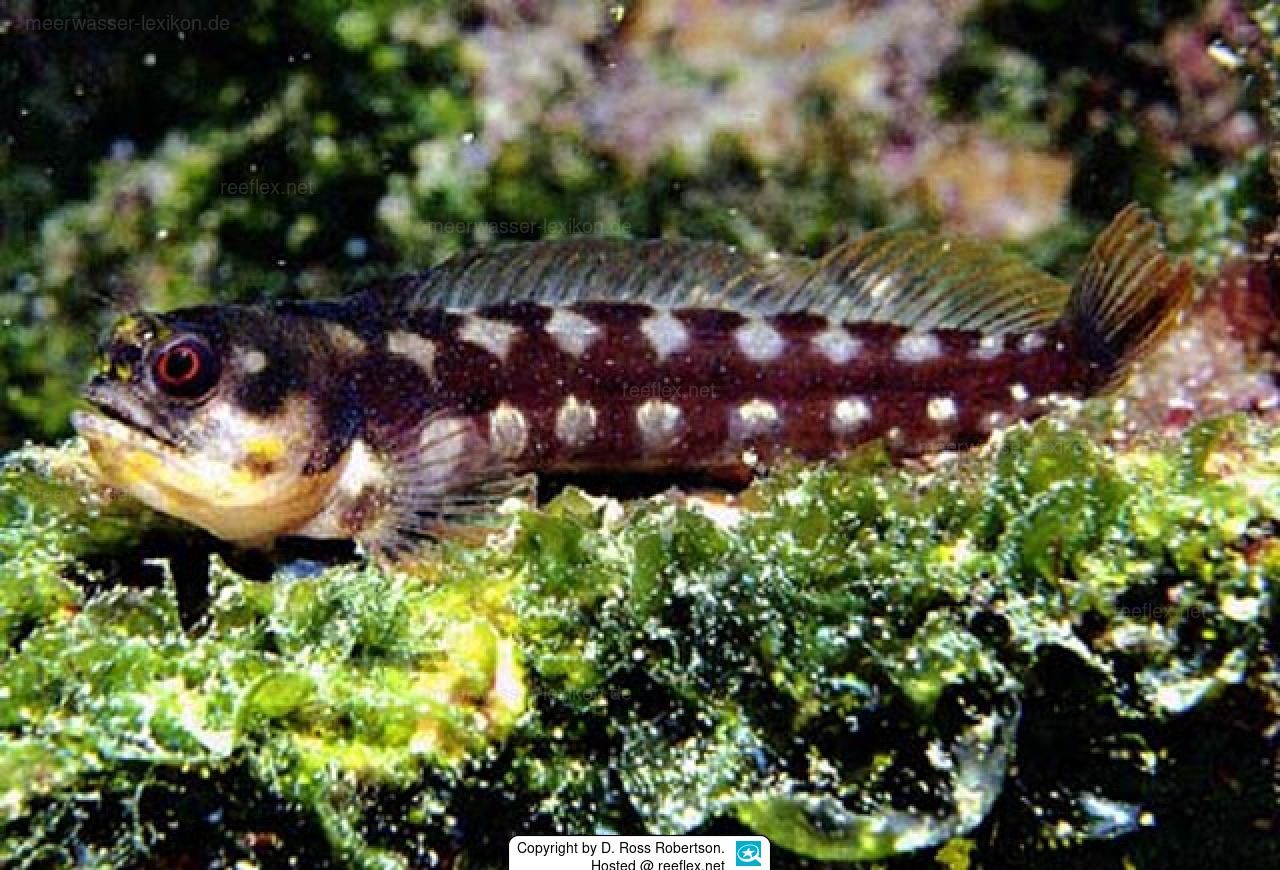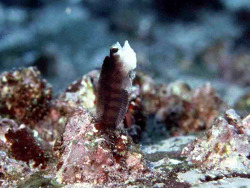Info
Acanthemblemaria castroi, Stephens & Hobson, 1966
In and around the Galapagos National Park, which belongs to Ecuador, you can find animals that are found nowhere else in the world.
With the help of the Galapagos finches, Charles Darwin developed his theory of the ecological niche and the origin of species (evolution).
Acanthemblemaria castroi is a blenny that is very rarely found outside its home, a barnacle.
Usually only the fish's head protrudes from the opening.
Reproduction.
The fertilised eggs are hung on the walls of the home and incubated and guarded by the male parent.
As there are no legal exports due to the legally protected archipelago, we have chosen the status "not suitable for home aquariums".
Jumping guard
A jumping guard prevents (nocturnal) fish from jumping out.
Wrasses, blennies, hawkfishs and gobies jump out of an unprotected tank in fright if their night rest is disturbed, unfortunately these jumpers are found dried up in the morning on carpets, glass edges or later behind the tank.
https://www.korallenriff.de/en/article/1925_5_Jump_Protection_Solutions_for_Fish_in_the_Aquarium__5_Net_Covers.html
A small night light also helps, as it provides the fish with a means of orientation in the dark!
In and around the Galapagos National Park, which belongs to Ecuador, you can find animals that are found nowhere else in the world.
With the help of the Galapagos finches, Charles Darwin developed his theory of the ecological niche and the origin of species (evolution).
Acanthemblemaria castroi is a blenny that is very rarely found outside its home, a barnacle.
Usually only the fish's head protrudes from the opening.
Reproduction.
The fertilised eggs are hung on the walls of the home and incubated and guarded by the male parent.
As there are no legal exports due to the legally protected archipelago, we have chosen the status "not suitable for home aquariums".
Jumping guard
A jumping guard prevents (nocturnal) fish from jumping out.
Wrasses, blennies, hawkfishs and gobies jump out of an unprotected tank in fright if their night rest is disturbed, unfortunately these jumpers are found dried up in the morning on carpets, glass edges or later behind the tank.
https://www.korallenriff.de/en/article/1925_5_Jump_Protection_Solutions_for_Fish_in_the_Aquarium__5_Net_Covers.html
A small night light also helps, as it provides the fish with a means of orientation in the dark!







 Dr. D. Ross Robertson, Panama
Dr. D. Ross Robertson, Panama






















